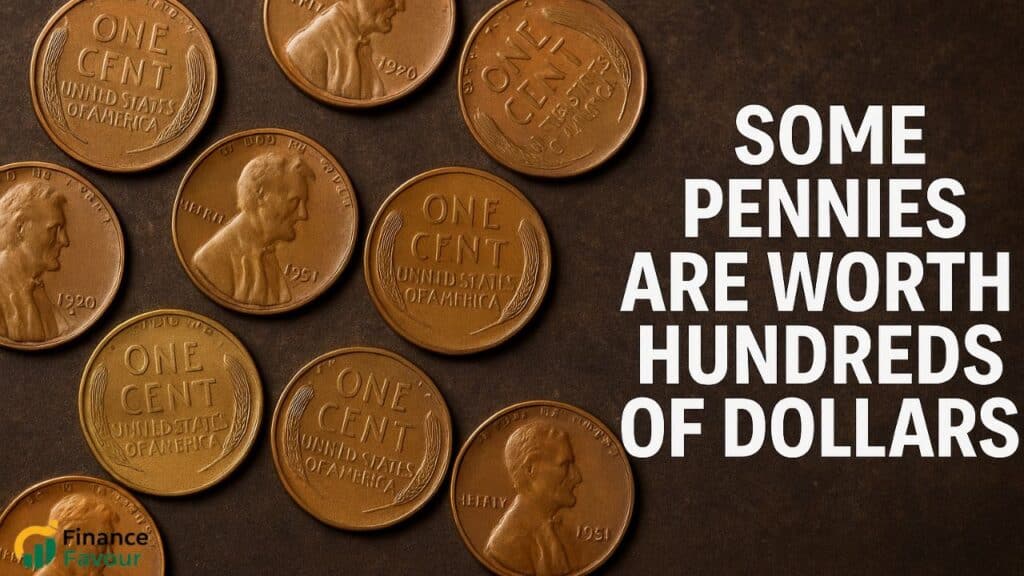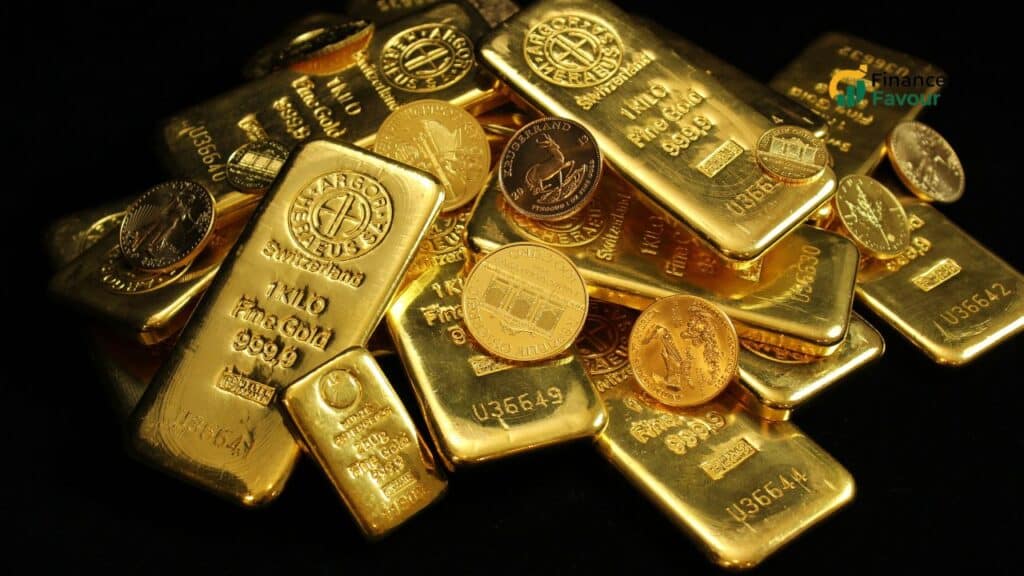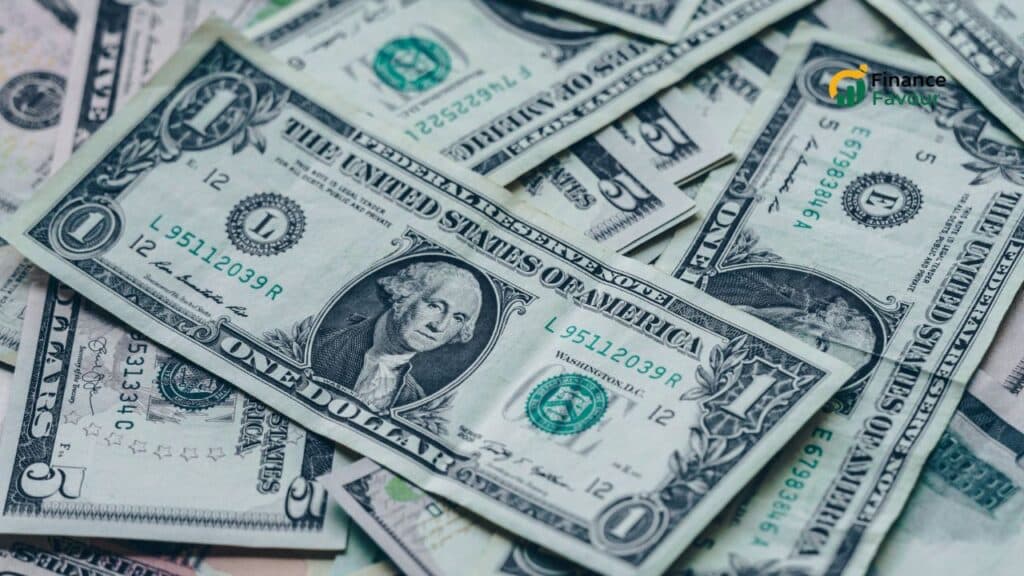Ever glance at a penny and wonder if it’s worth more than one cent? You’re not alone. It turns out that some of the coins jangling in your change jar could be worth hundreds, even thousands of dollars. Sounds unbelievable, right? But it’s 100% true. Certain pennies, especially those minted in specific years or containing rare errors, have become hot commodities among coin collectors.
From wartime metal shifts to minting mistakes that slipped through quality checks, some pennies carry stories that elevate them far beyond their humble face value. So, how do you know if the penny you’re holding is one of the rare gems? That’s exactly what we’ll explore in this in-depth guide.
Let’s uncover the secrets behind these valuable little coins because the next time you dig into your pocket for a penny, it might just be a jackpot in disguise.
The Basics of Penny Valuation
What Determines a Penny’s Worth?
The value of a penny isn’t just about its age though older coins can certainly be more desirable. Several key factors come into play when determining a penny’s market value, especially to collectors and investors. Here’s what you need to know:
- Mintage: This refers to how many coins were made that year. Generally, the fewer the coins produced, the higher the potential value particularly if they were only minted in one location (such as San Francisco or Denver).
- Rarity: Beyond the number produced, the number still in circulation or available to collectors matters. A coin that is hard to find is inherently more valuable.
- Condition: A well-preserved coin in mint state (i.e., no wear or damage) is far more valuable than a heavily circulated one. The fewer the scratches, wear marks, and discolorations, the better.
- Metal Composition: Not all pennies are made from the same metal. Before 1982, most were 95% copper. After that, they were made of zinc with a copper coating. Pennies with rare or unusual compositions are worth much more.
- Errors and Varieties: Mistakes happen at the U.S. Mint, and when they do, collectors get excited. Misprints, doubling of letters/numbers, off-center designs, and other errors can increase a penny’s value dramatically.
Understanding Coin Grading
If you’re serious about figuring out whether your penny is a collector’s item, you’ll need to understand coin grading. Coin grading evaluates the physical condition of the coin, and it’s one of the biggest factors affecting its price.
Here’s a simplified look at how coin grading works:
- Good (G-4 to G-6): Very worn, but date and major features still visible.
- Fine (F-12 to F-15): Moderate wear with some detail remaining.
- Very Fine (VF-20 to VF-35): More design details visible, moderate wear.
- Extremely Fine (EF-40 to EF-45): Light wear on high points of design.
- About Uncirculated (AU-50 to AU-58): Minimal wear, nearly mint.
- Mint State (MS-60 to MS-70): No wear; a perfect or near-perfect coin straight from the mint.
The Professional Coin Grading Service (PCGS) and Numismatic Guaranty Corporation (NGC) are two respected organizations that grade coins. Getting your penny graded by them can authenticate its value and make it easier to sell at top dollar.
High-Value Pennies by Year
Let’s dive into the real meat of this guide the specific penny years that are known to be worth serious money. These aren’t just old coins; these are rare and often involve a fascinating backstory.
1909-S VDB Lincoln Cent
The 1909-S VDB penny is one of the most famous U.S. coins, and for good reason. This was the very first year of the Lincoln cent, and it included the initials of the designer Victor David Brenner on the back, near the rim. Some critics thought this was too prominent, so the Mint removed the initials from later versions.
- Only 484,000 of the 1909-S VDB pennies were minted.
- Their rarity and historical significance have made them highly collectible.
- In fine condition, one of these pennies can easily sell for $700–$1,500.
- In uncirculated condition, you could be looking at $2,000–$5,000 or more.
Finding one of these in your pocket change is like hitting the numismatic lottery.
1914-D Lincoln Penny
Another big-ticket item among collectors is the 1914-D penny. It was minted in Denver and had a relatively low production number (only 1.2 million made). Add to that the fact that not many survived in good condition, and you’ve got a coin that collectors are eager to get their hands on.
- In average circulated condition, this penny might fetch $150–$300.
- In higher grades, especially uncirculated, expect to see prices soar to $3,000 or even higher.
What makes this penny stand out is how tricky it is to find one without wear. Most of the 1914-Ds still around have been through decades of circulation.
1922 No D Penny
This peculiar penny has an almost mythic status among collectors because of what it lacks a mint mark. Most pennies from 1922 were struck at the Denver Mint and carry the “D” mint mark. However, due to a heavily worn die, some were produced without any mint mark at all. This wasn’t intentional, and that’s what makes it so valuable.
Here’s why this penny stands out:
- It’s the only Lincoln cent struck without a mint mark in a year when it wasn’t produced in Philadelphia.
- Collectors recognize two types: a weak D and a true “No D” variety, with the latter being much more valuable.
- Prices range from $500 in very worn condition to over $10,000 in Mint State.
To identify a genuine 1922 No D, you must look at the details of Lincoln’s face and the reverse side of the coin. Authentic versions have very sharp reverse details and certain known die characteristics.
1943 Copper Penny
This is arguably the Holy Grail of pennies. In 1943, due to the need for copper during World War II, the U.S. Mint produced pennies from zinc-coated steel. However, a small number of copper planchets (the metal discs used to make coins) were left in the machines from 1942 and accidentally used in 1943.
Here’s why this penny causes a frenzy:
- Only about 20 known examples exist across all mints.
- One of these rarities sold for over $1 million in 2010.
- Most “1943 copper pennies” people find are actually steel coated to look like copper use a magnet to test it. If it sticks, it’s steel. If not, you might have struck gold (well, copper).
Be cautious of fakes. Many scammers plate steel pennies with copper or alter the date on 1948 coins to look like 1943. Always get potential finds verified by a grading service.
1955 Doubled Die Penny
This error coin is famous for its extremely noticeable doubling of the text and date on the obverse (front) of the coin. It’s one of the most dramatic and sought-after error coins in American numismatics.
Key points about the 1955 Doubled Die:
- Easily visible to the naked eye no magnifying glass needed.
- All known specimens were struck at the Philadelphia Mint.
- Values start around $1,000 for a heavily circulated example and can exceed $15,000 for uncirculated grades.
Collectors love this coin because it’s so obvious. You don’t need special tools to spot the error, which makes finding one that much more thrilling.
1969-S Doubled Die Obverse
Often confused with the 1955 version, the 1969-S doubled die is another dramatic error, and it’s much rarer. The “S” indicates it was minted in San Francisco. What makes this penny even more exciting is that the doubling is found on the same elements: the date and the inscriptions “LIBERTY” and “IN GOD WE TRUST.”
Why it’s a top find:
- Very few verified examples are known to exist.
- Counterfeits have flooded the market, so authentication is essential.
- Depending on condition, these coins can sell for anywhere from $10,000 to over $75,000.
Because of its scarcity and extreme doubling, this coin has become a top-tier prize for error collectors.
1982-D Small Date Copper Penny
This penny is a transitional error. In 1982, the U.S. Mint changed the composition of pennies from 95% copper to 97.5% zinc. However, some coins from the Denver Mint were struck with the old copper blanks but used the new small date design, creating a unique hybrid that wasn’t supposed to exist.
Here’s the scoop:
- Only a few verified 1982-D small date copper pennies have ever surfaced.
- They weigh about 3.11 grams, compared to the 2.5 grams of zinc pennies.
- If you have a small-date 1982-D penny, weigh it if it’s copper, it might be worth $10,000 to $15,000 or more.
Many coin experts consider this error one of the most intriguing modern penny anomalies. Because it’s both a date and composition transition, it checks off multiple boxes for value.
How to Identify a Valuable Penny
Checking the Date and Mint Mark
The date and mint mark are the first two things to inspect. Here’s what you need to look for:
- Date: Compare it to known valuable years like 1909, 1943, 1955, etc.
- Mint Mark: Look just below the date on the obverse side. Letters include:
- P: Philadelphia (often has no mark)
- D: Denver
- S: San Francisco
Some years were only minted in one location, making their mark (or lack thereof) a key indicator of rarity.
Using a Coin Scale
A digital coin scale is a penny collector’s best friend. It helps identify rare composition errors like the 1982-D copper penny. Here are standard weights:
- Copper pennies (pre-1982): ~3.11 grams
- Zinc pennies (post-1982): ~2.5 grams
If your penny’s weight doesn’t match the expected metal for its year, it might be something special.
Spotting Errors and Varieties
You’ll need a magnifying glass or a jeweler’s loupe for this step. Here are common (and valuable) types of mint errors:
- Doubled Die: Text and numbers appear to have been stamped twice.
- Off-Center Strike: The design isn’t aligned correctly part of the coin is blank.
- Die Cracks: Thin raised lines from broken dies used in minting.
- Cuds: A blob or bump where part of the coin design is missing due to a damaged die.
These errors often make a penny much more valuable. If you suspect an error, compare your coin with pictures from trusted sources like PCGS or CoinTrackers.
Tools and Resources for Coin Collectors
Online Coin Valuation Databases
In the digital age, there’s no need to guess the value of your penny. Several authoritative websites offer comprehensive information on coin values, rarity, and error types. Here are some top resources:
- PCGS (Professional Coin Grading Service) – Offers up-to-date pricing guides, population reports, and authentication services.
- NGC (Numismatic Guaranty Corporation) – Provides coin verification and a robust coin database.
- CoinTrackers – A user-friendly platform that lets you search by year and type to see estimated values.
- USA Coin Book – Features images, user-submitted values, and error listings for all U.S. coins.
Using these sites, you can compare your coins with verified examples, learn more about rare varieties, and even see recent auction results.
Coin Books and Guides
Sometimes, going old-school with a book is the best way to build your foundational knowledge. Every coin collector should consider having the following in their collection:
- A Guide Book of United States Coins (The Red Book) – Updated annually, it’s the gold standard for coin pricing and history.
- Strike It Rich with Pocket Change – Focuses specifically on error coins you might find in everyday circulation.
- Official ANA Grading Standards – An in-depth guide on coin grading from the American Numismatic Association.
These resources can be especially useful if you enjoy flipping through pages, highlighting key facts, and bookmarking important years.
Local Coin Shops and Coin Shows
If you prefer hands-on learning and want a second opinion, visit a local coin shop or attend a coin show. These venues give you access to experienced collectors and dealers who can:
- Help authenticate and evaluate your coins.
- Offer tips on starting or expanding your collection.
- Show examples of rare pennies you can examine up close.
Coin shows, in particular, are like candy stores for numismatists. You’ll see everything from colonial coins to modern mint errors, and you’ll get a sense of current market trends.
Where and How to Sell Valuable Pennies
Auction Sites and Online Marketplaces
Online platforms have made it easier than ever to sell your valuable pennies. Here’s where to start:
- eBay – Ideal for reaching a broad audience. Include detailed photos, clear descriptions, and set realistic starting bids or reserves.
- Heritage Auctions – A high-end option for serious collectors. They handle marketing, authentication, and buyer outreach for major coins.
- Great Collections – Offers an easy way to consign coins, especially if they’re already graded.
Remember, selling online means you may need to field questions and manage shipping. If your penny is worth thousands, it’s worth investing in professional photos and possibly insurance.
Certified Dealers and Coin Shops
Prefer not to deal with the hassles of online selling? A certified coin dealer can give you an appraisal and offer to buy your coin outright. Be sure to:
- Check credentials through the American Numismatic Association (ANA).
- Read reviews and testimonials.
- Get a second opinion before selling, especially for coins worth over $500.
Local dealers may not offer top dollar, but the convenience and instant payment can be worth it.
Coin Grading Services
If your penny is valuable or you’re unsure of its condition, getting it professionally graded can add significant value. Reputable grading services like PCGS and NGC:
- Verify authenticity.
- Assign a numeric grade from 1 to 70.
- Seal the coin in a protective slab with an official label.
Buyers trust graded coins more and are often willing to pay a premium. Just keep in mind that grading costs money (starting at $20–$50 per coin), so reserve this option for coins with high potential.
Common Myths About Valuable Pennies
Age Doesn’t Always Mean Value
One of the biggest misconceptions is that any old penny is automatically valuable. While age can contribute, many older pennies were minted in high numbers and are still very common today.
For example:
- A 1944 penny might be 80 years old, but if it’s not rare or in mint condition, it’s probably worth only a few cents.
- Conversely, a modern penny with a rare error might be worth hundreds.
It’s about rarity and condition not just age.
Cleaning a Coin Can Decrease Its Value
It might be tempting to polish a dirty coin, but this is a big no-no in the coin world. Cleaning a coin can:
- Scratch its surface.
- Remove its natural patina.
- Make it look tampered with.
Collectors value originality. Even if a coin looks dirty, it’s better left untouched. If it truly needs cleaning, consult a professional numismatist who can do it safely or leave it in its natural state and let the buyer decide.
Tips for Beginner Coin Collectors
Starting Your Own Penny Collection
You don’t need a fortune to start collecting valuable pennies. Begin by:
- Searching your pocket change and coin jars.
- Buying a beginner’s coin folder (Lincoln cents are a great series to start with).
- Visiting local coin shops or shows to see examples and ask questions.
Set a goal like collecting every Lincoln penny from 1909 to the present—and learn as you go.
Avoiding Counterfeits
As penny values increase, so do the attempts to fake them. Be on the lookout for:
- Altered dates (e.g., changing a 1948 to a 1943).
- Plated coins made to look like rare errors.
- Reproductions sold as “replicas” on e-commerce sites.
Stick to reputable sellers and consider professional grading for anything valuable.
Building Knowledge and Patience
Numismatics is a marathon, not a sprint. The more you learn, the more likely you are to recognize a valuable coin when you see one. Read books, join online forums, attend shows, and engage with other collectors.
Over time, your eye will sharpen, and you’ll be able to spot the difference between a common penny and a rare treasure.
Conclusion
So, is it time to raid your piggy bank? Maybe. Some pennies especially those from key years or containing mint errors can be worth far more than one cent. The next time you get change back at the store, take a closer look at your pennies. Check the date, inspect the mint mark, and weigh any that seem suspicious. You just might be holding a coin worth hundreds or even thousands of dollars.
And remember, the best part of coin collecting isn’t just the money. It’s the history, the thrill of the hunt, and the satisfaction of uncovering a hidden gem in the most unexpected place.
FAQs
Check the year and mint mark, inspect it for errors, and compare it with listings on reputable coin sites like PCGS or NGC.
Use coin holders, plastic flips, or albums to keep them dry, clean, and organized. Avoid touching them with bare hands to preserve their condition.
Yes! Many rare or error pennies are still out there in circulation. Keep an eye out and use a magnifier and scale to evaluate finds.
Yes, selling old U.S. coins is completely legal. There are no restrictions on privately owning or selling U.S. pennies, even rare ones.
Not all errors are created equal. While many increase a penny’s value, some minor errors may not be worth much. Major, well-documented errors are the most valuable.




